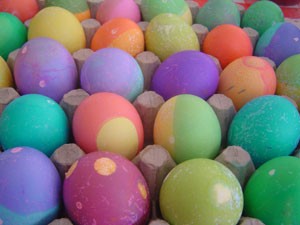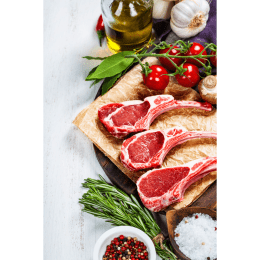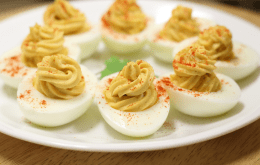 Easter is a great time to celebrate with family and friends. If you plan to have an Easter egg hunt with real eggs, here’s some food safety tips to keep in mind.
Easter is a great time to celebrate with family and friends. If you plan to have an Easter egg hunt with real eggs, here’s some food safety tips to keep in mind.
- Only use eggs that have been refrigerated, and discard eggs that are cracked or dirty.
- When cooking, place a single layer of eggs in a saucepan. Add water to at least one inch above the eggs. Cover the pan, bring the water to a boil, and carefully remove the pan from the heat. Let the eggs stand (18 minutes for extra large eggs, 15 minutes for large, 12 minutes for medium). Immediately run cold water over the eggs. When the eggs are cool enough to handle, place them in an uncovered container in the refrigerator where they can air-dry.
- When decorating, be sure to use food-grade dyes. It is safe to use commercial egg dyes, liquid food coloring, and fruit-drink powders. When handling eggs, be careful not to crack them. Otherwise, bacteria could enter the egg through the cracks in the shell.
- Keep hard-cooked Easter eggs chilled on a shelf inside the refrigerator, not in the refrigerator door.
- Hide the eggs in places that are protected from dirt, pets and other potential sources of bacteria.
- Remember the two hour rule, and make sure the “found” eggs are back in the refrigerator or consumed within two hours.
- Remember that hard-boiled eggs are only safe to eat for one week after cooking.
Source: https://www.fightbac.org/egg-stra-care-for-spring-celebrations/




